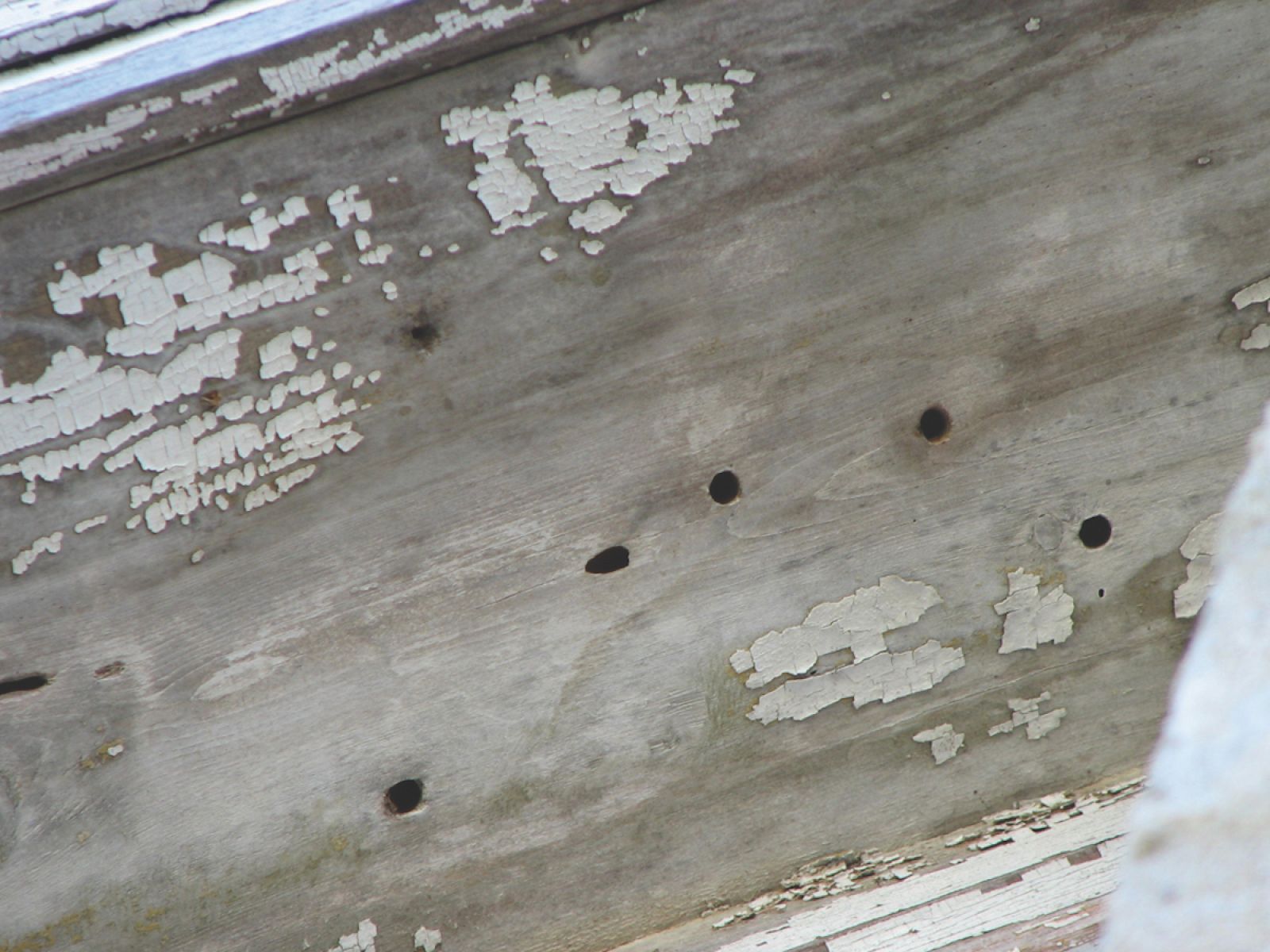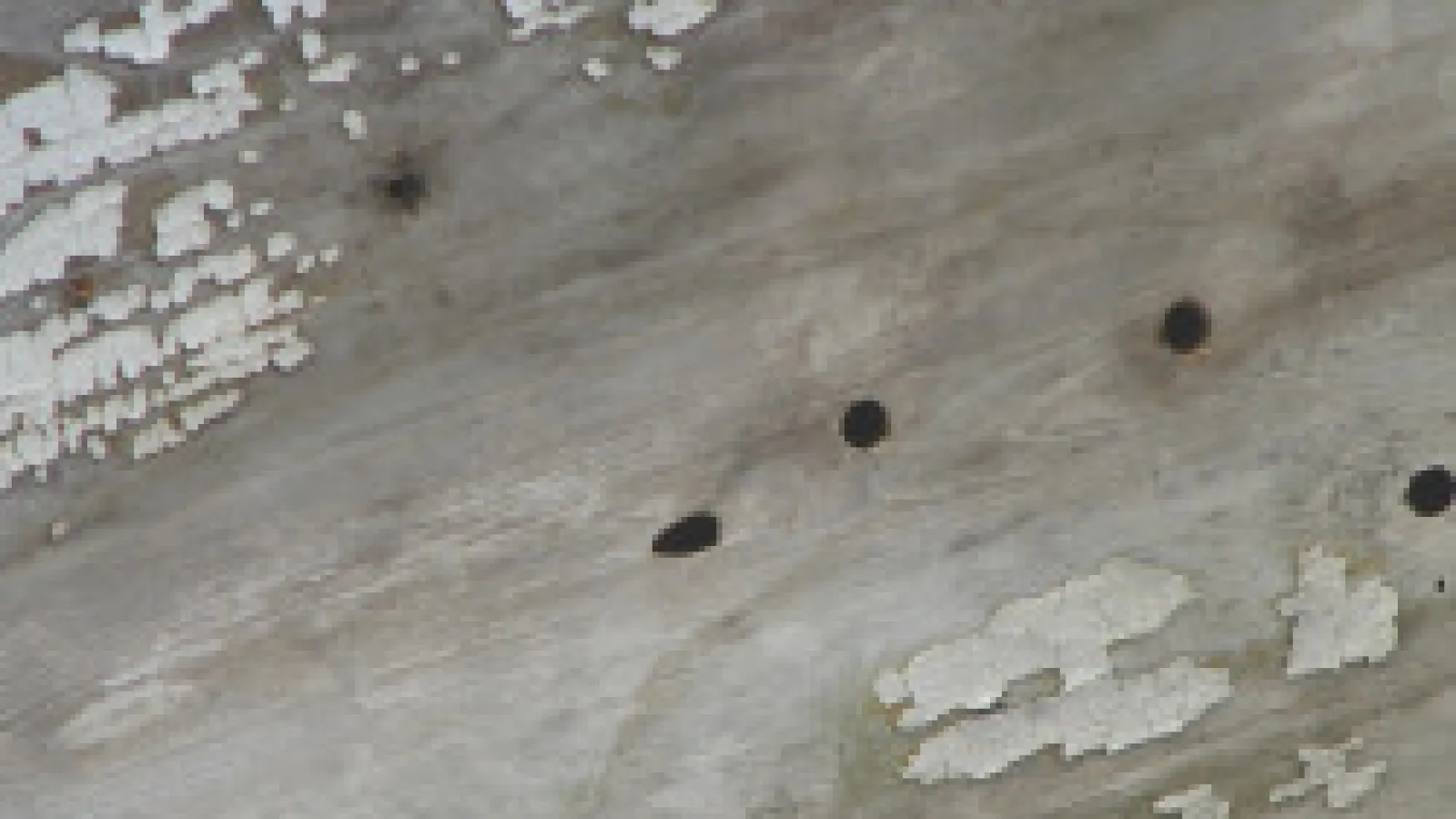You might not know how bees reproduce, but the answer might surprise you. Carpenter bees have a rather unusual reproduction process. Like most insects, carpenter bees lay eggs, however the location of these eggs is rather peculiar. You could say they begin their obsession with wood at a very young age.

Where The Eggs Lie
As the name implies, carpenter bees love wood. Because of this, they are a huge problem for many Georgia homeowners who have any kind of wooden structure on or around their home. Unfinished wood, and weather wood, are huge attractants to carpenter bees. However, contrary to popular belief, the carpenter bees are not actually eating the wood.
Carpenter bees actually use the wood as the nesting site for their offspring. They drill a round entrance hole into the wood, against the grain, that is about half an inch in diameter. When the tunnel is about 1 inch deep, the bee begins to tunnel with the grain of the wood at a 90 degree angle.
These holes and tunnels are their homes. The adult male and female bees use them to hibernate in the winter, and they use the spring months to clean and enhance their tunnels to accommodate and cultivate their eggs. Let's take a look at the steps that carpenter bees utilize to reproduce and raise their offspring:
1. The female carpenter bee creates approximately 6 to 8 chambers in the wood.
2. They stock up the chambers of their tunneled homes with a mixture of pollen and regurgitated nectar, known as bee bread, which serves as food for their young.
3. One egg is placed on a food supply, and each chamber is then sealed off for protection and privacy.
4. The larvae hatch, and feed upon their allocated food portions.
5. The larvae develop and pupate in their chamber with the nourishment left for them.
6. Newly developed adult carpenters leave their chambers and enter the world around August and continue the life cycle to create other carpenter bees.
How to Deal With Carpenter Bees
Carpenter bees may be swarming around your home and infesting you wooden structures. Though the damage that one single bee does to the wood is slight, over the years the generations to come will expand the tunnel causing more severe damage to the structure. That means that carpenter bees should be dealt with when the problem is noticed, so you can avoid expensive or detrimental structural damage.
There are many different theories and strategies on how to best deal with carpenter bees. However, some of them are inhumane and not environmentally friendly. Some may recommend using pesticides. We do not endorse the use of poisonous pesticides. The majority of pesticides can harm children, pets, livestock, other organic material, or can contaminate waters.
Because of the difficulty and delicacy of dealing with carpenter bees, we recommend that if you think you have a problem you contact a pest control professional. At Breda Pest Management we understand the importance of pollinators in the ecosystem, and will fix your problem without harming a dying species of important pollinators.
It is important to note that carpenter bees will likely not harm you. As a matter of fact, the male carpenter bee cannot even sting, and it is the male carpenter bee that you will most likely come in contact with, unless you attempt to treat the tunnels on your own.
The male carpenter bee will hover in the vicinity of the nest in an effort to protect it. They will dart after any other insects or humans who come near, to try to scare them off. The female carpenter bee will sting if she is provoked. However, if you are not handling them or trying to destroy their home, you will likely not be harmed by a carpenter bee.
If you believe you might have carpenter bees infesting your wooden structures look for evidence. Discoloration in the wood from excrement is a common tell-tale sign of carpenter bee infestation. You might also notice some sawdust lying around that was created when the bees made their holes and dug their tunnels.
For more information about common pest problems, or to request the help of trained pest control professionals, contact Breda Pest Management at 770-466-6700. You may also request a free consultation about how our treatments and services might be able to help you.




